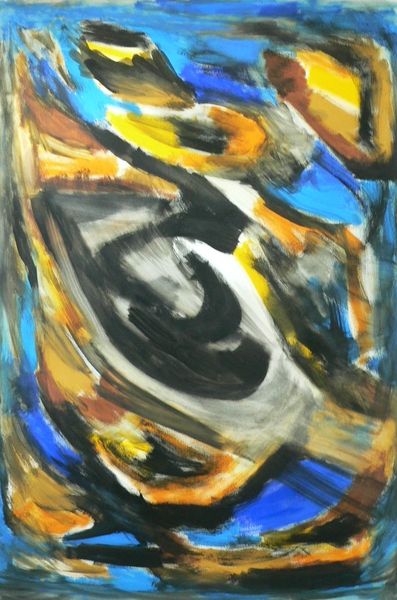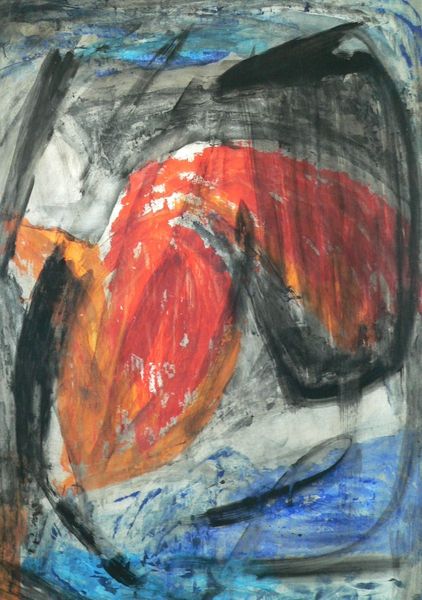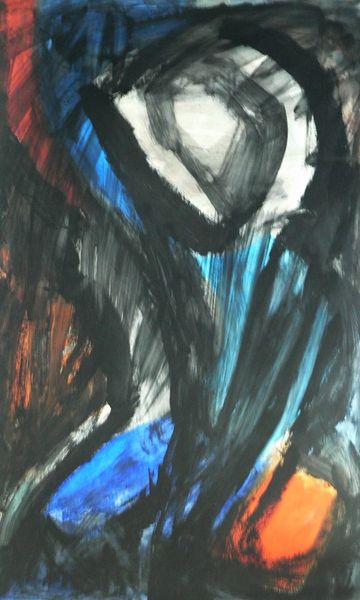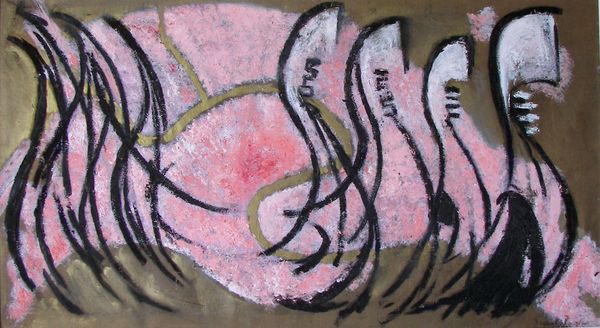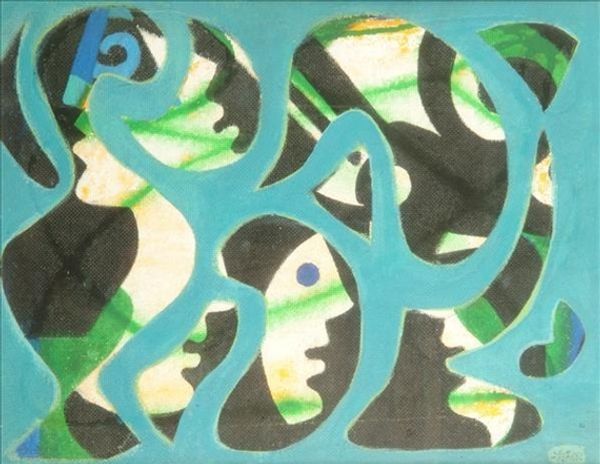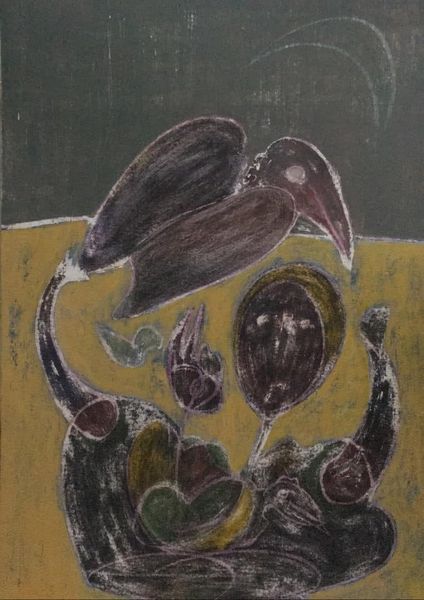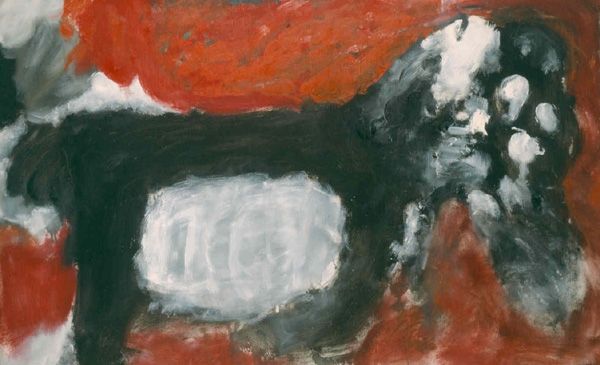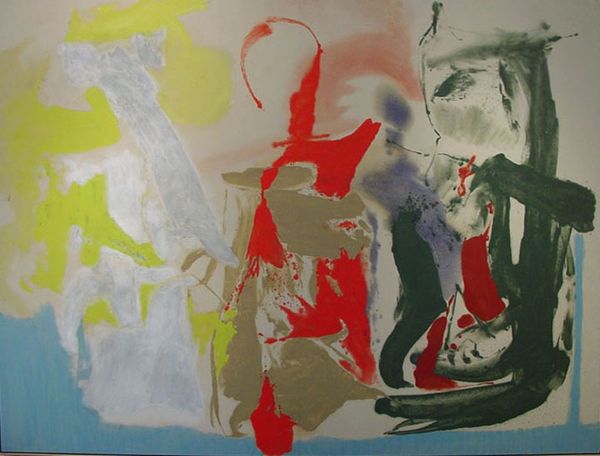
watercolor
#
watercolor
#
biomorphic
#
abstraction
#
watercolour bleed
#
watercolour illustration
#
surrealism
#
orange
Copyright: Grace Pailthorpe,Fair Use
Curator: We are looking at "Surrealistic Gouache" by Grace Pailthorpe, a striking watercolor. The amorphous shapes and vibrant palette give it a captivating quality. Editor: My first impression is one of unease. The colors are bright, even cheerful in places with the yellows and oranges, but the forms themselves feel almost…organic, but in a disturbing way. Curator: Pailthorpe, alongside Reuben Mednikoff, developed a surrealist style deeply influenced by psychoanalysis and the theories of Freud and Jung. They sought to access the unconscious mind, visualizing its hidden impulses. This is about disrupting traditional representation, allowing other voices and experiences into view, including those marginalized. Editor: Right, but beyond theory, I see process here. Notice the watery nature of the gouache. The artist is letting the materials dictate the form to a certain extent. The watercolor bleed creates edges that are soft and undefined. Did she dilute the medium or use specific kinds of paper, and how would this affect the drying time, given that paper quality can even be considered along lines of class access, impacting not just the finished form of the work but who would get to even make these pieces in the first place? Curator: Absolutely, the materiality connects to those ideas. This use of the medium challenges academic notions of painting; the biomorphic forms reference internal organs, embodying emotional or psychological states and questioning fixed social constructs. What is accepted and allowed. The red feels potent, visceral. Editor: Agreed, the reds punctuate the otherwise muted grays and blacks. It gives the work a pulsating quality, reminiscent of blood, like you say. Curator: I agree. Pailthorpe’s artwork is a testament to the liberating power of surrealism. The distortion of forms invites us to challenge conventional structures of power, opening new avenues for the female body, desires, and subjectivities to manifest. Editor: It seems to me like she's exploring the push and pull of control through a combination of intention and material play. This act, considered alone, can highlight many ways a "hand" impacts even abstraction in how production can be so critical to understanding works like this and not merely relying on ideas and identities as ways of explaining art making, so often removed from material conditions. Curator: Exactly, her perspective brings into focus overlooked and stigmatized aspects of feminine experience, the importance of these types of artwork being more and more recognised. Editor: These visual strategies create a disorienting effect, prompting us to interrogate the materials and techniques used. Very interesting.
Comments
No comments
Be the first to comment and join the conversation on the ultimate creative platform.


